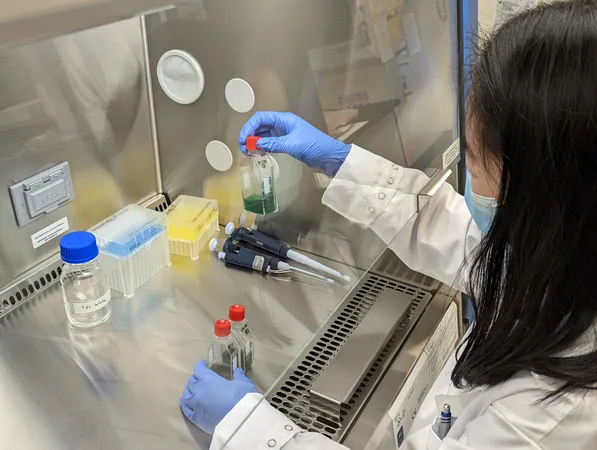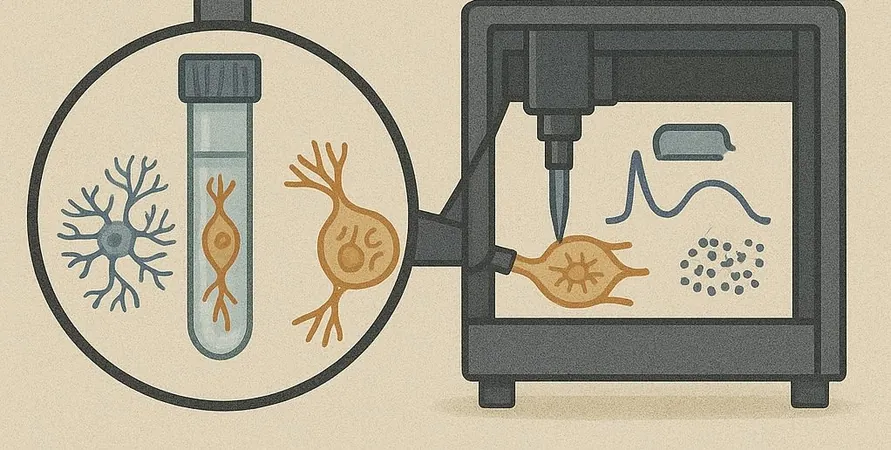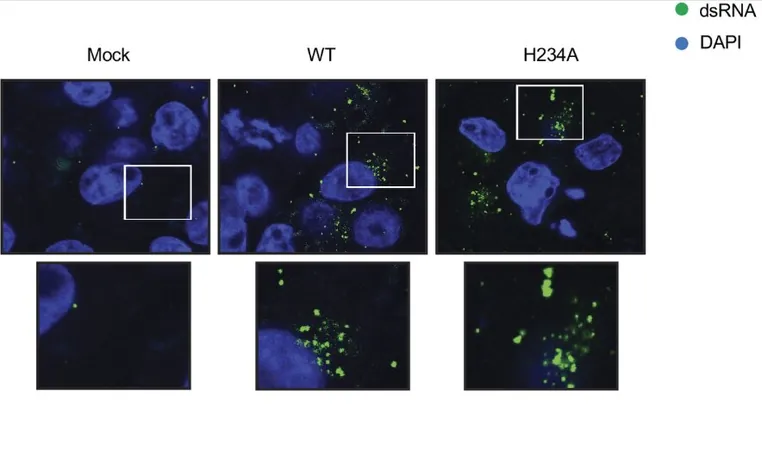
Are Hidden Toxins in Our Waters the Price We Pay for Fighting Algal Blooms?
2025-05-12
Author: Ming
New Research Unveils Alarming Truth About Algal Blooms
Recent laboratory studies are shaking up long-held beliefs about the relationship between viruses and toxic algal blooms (HABs). These notorious blooms, often characterized by their thick, blue-green appearance, threaten aquatic ecosystems, drinking water sources, and public health. The latest findings suggest that the presence of viruses attacking these algal colonies might actually worsen the situation, raising urgent questions about our understanding of these complex interactions.
The Study Behind the Scare
Published in the journal *Microorganisms*, this groundbreaking research led by Dr. Jozef Nissimov at the University of Waterloo reveals startling evidence. The team found that when viruses infect *Microcystis aeruginosa*, a notorious species behind harmful algal blooms, they release dangerously high levels of microcystin-LR—a potent liver toxin—into surrounding waters.
Invisible Danger: Toxins Persist Even in Clear Waters
What’s particularly alarming is that after the infected cells die, the microcystin-LR levels can soar to about 40 times above the safe thresholds for recreational waters, remaining hazardous for days despite the water appearing clear. This deceptive clarity could mislead officials and the public into underestimating the safety of water for recreational activities and consumption.
Understanding the Complex Relationship
Dr. Nissimov asserts, "Our research shows us that the relationship between viruses and toxic algae is more complicated than we thought. We need to better understand these interactions before we can consider viruses as something that acts as a natural HAB-control strategy." This call for deeper inquiry sheds light on the urgent need for improved monitoring and regulation of water quality.
The Global Impact of Harmful Algal Blooms
HABs pose a worldwide threat, leading to various health issues in humans and animals, including rashes, gastrointestinal distress, and even neurological problems. In Canada, where microcystins are heavily regulated, the implications of these findings are particularly pressing for policymakers.
Dead Zones and Economic Repercussions
The fallout from harmful algal blooms extends beyond health risks; these blooms can decimate aquatic life by creating dead zones with depleted oxygen levels. This not only affects biodiversity but also disrupts local economies due to beach closures and fisheries being rendered unsafe. In the Great Lakes, the frequency and severity of blooms from *M. aeruginosa* have escalated, particularly in areas like western Lake Erie.
A Path Forward: Research Implications
The implications of Nissimov's research pave the way for further investigations into the intricate dynamics between climate change, nutrient pollution, and the virus-algae relationship. Understanding how toxins like microcystin-LR are processed in the environment could bring new insights into mitigating these toxic releases.
A Call for Informed Decision-Making
Researchers emphasize that while viruses might still play a crucial role in managing harmful algal blooms, a nuanced approach is essential. It is critical to weigh the benefits of viral presence against its potentially harmful effects on our water bodies. The goal is to equip governments and water agencies with the knowledge needed to make sound, evidence-based decisions for the future.



 Brasil (PT)
Brasil (PT)
 Canada (EN)
Canada (EN)
 Chile (ES)
Chile (ES)
 Česko (CS)
Česko (CS)
 대한민국 (KO)
대한민국 (KO)
 España (ES)
España (ES)
 France (FR)
France (FR)
 Hong Kong (EN)
Hong Kong (EN)
 Italia (IT)
Italia (IT)
 日本 (JA)
日本 (JA)
 Magyarország (HU)
Magyarország (HU)
 Norge (NO)
Norge (NO)
 Polska (PL)
Polska (PL)
 Schweiz (DE)
Schweiz (DE)
 Singapore (EN)
Singapore (EN)
 Sverige (SV)
Sverige (SV)
 Suomi (FI)
Suomi (FI)
 Türkiye (TR)
Türkiye (TR)
 الإمارات العربية المتحدة (AR)
الإمارات العربية المتحدة (AR)